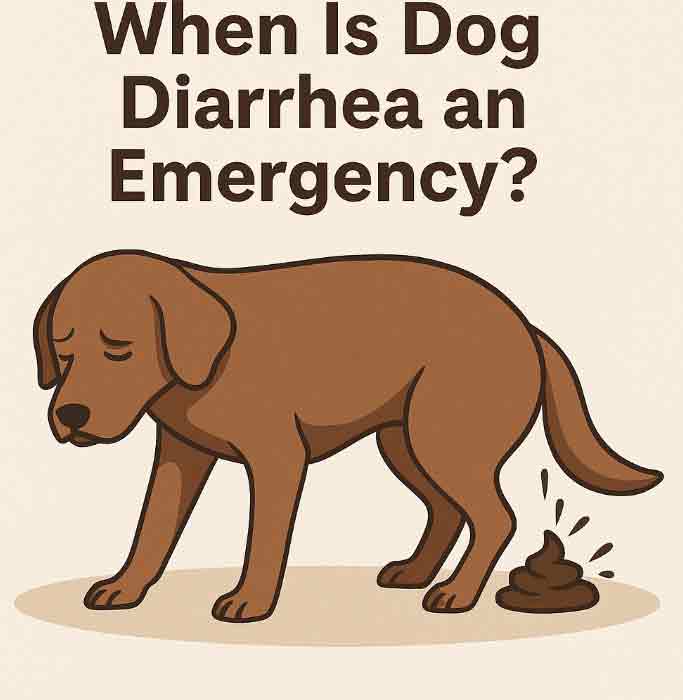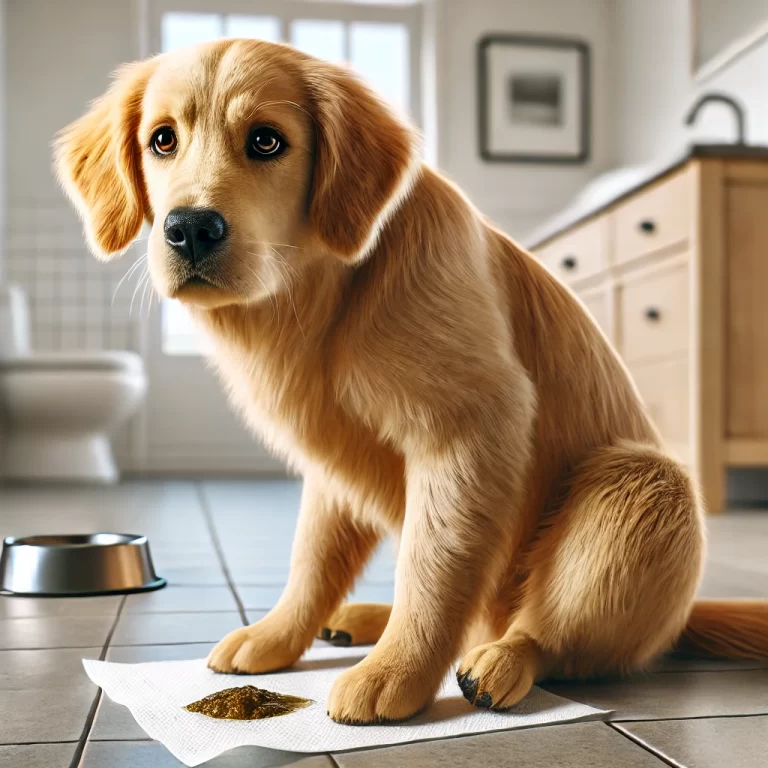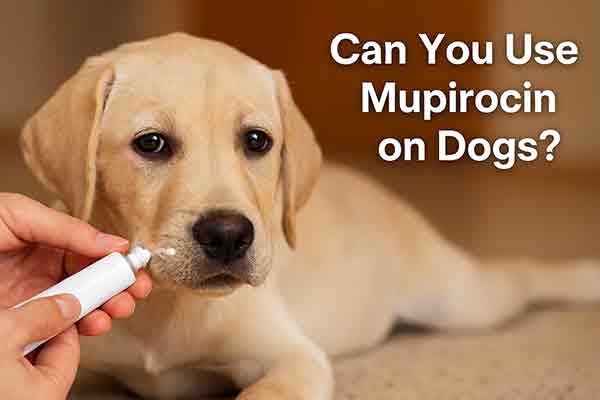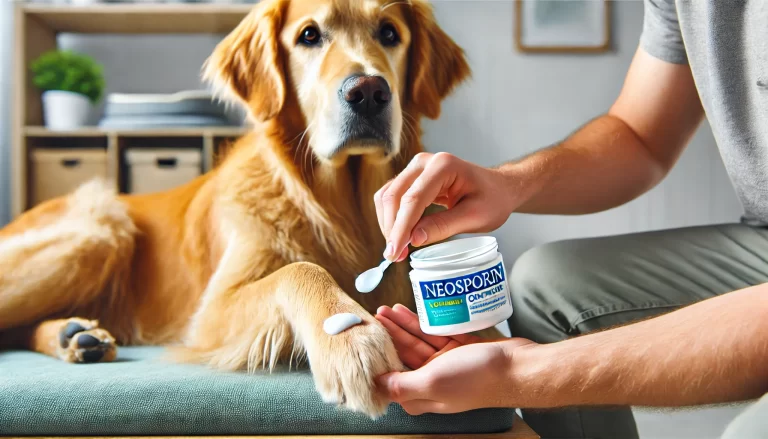When Is Dog Diarrhea an Emergency?
Table of Contents
- Introduction
- Understanding Dog Diarrhea
- Common Causes of Dog Diarrhea
- Mild vs. Serious Diarrhea
- When to Call the Vet Immediately
- What to Do at Home for Mild Diarrhea
- How Vets Diagnose the Cause
- Treatment Options for Dog Diarrhea
- Prevention Tips
- FAQ
- Conclusion
Introduction
Almost every dog owner will deal with diarrhea at some point. But while occasional loose stools may not be a major concern, there are times when dog diarrhea is an emergency. Knowing the difference between a minor digestive upset and a serious health threat could save your dog’s life. This article will help you identify the signs, causes, and emergency indicators of diarrhea in dogs.
Understanding Dog Diarrhea
Diarrhea in dogs refers to frequent, loose, or liquid bowel movements. It’s a symptom, not a disease, and can be caused by a wide range of issues—from dietary indiscretion to serious infections or underlying medical conditions. Paying attention to your dog’s behavior and the appearance of the stool can give you important clues about their health.
Common Causes of Dog Diarrhea
- Dietary changes or indiscretion: Eating new foods, garbage, or spoiled items.
- Food intolerances or allergies: Certain proteins or ingredients may not agree with your dog.
- Parasites: Giardia, roundworms, or hookworms can all cause diarrhea.
- Infections: Viral or bacterial infections like parvovirus or salmonella.
- Stress: Travel, moving, or new pets can upset the digestive system.
- Medications: Some antibiotics or NSAIDs may cause loose stools as a side effect.
- Underlying disease: Liver issues, kidney problems, or cancer.
Mild vs. Serious Diarrhea
Not all cases of dog diarrhea require an emergency vet visit. Mild diarrhea often resolves on its own in 24–48 hours, especially if caused by something minor like a dietary upset. Serious or emergency-level diarrhea, however, often includes other symptoms and may persist or worsen.
Mild Diarrhea May Include:
- Single or short-term loose stools
- No other symptoms (normal energy, appetite, hydration)
- Improvement within 1–2 days
Serious Diarrhea May Include:
- Bloody or black (tarry) stools
- Vomiting in addition to diarrhea
- Lethargy or weakness
- Fever or shaking
- Signs of pain (whining, hunched posture)
- Dehydration or sunken eyes
- Diarrhea lasting more than 48 hours
When to Call the Vet Immediately
Contact your vet or emergency animal hospital if your dog experiences:
- Bloody diarrhea or vomiting blood
- Signs of dehydration (dry gums, poor skin elasticity)
- Diarrhea in puppies or senior dogs (who are more vulnerable)
- Ongoing diarrhea for more than 48 hours
- Severe lethargy or signs of distress
Early intervention can be critical, especially if poisoning, infection, or an underlying disease is suspected.
What to Do at Home for Mild Diarrhea
If your dog has mild diarrhea but otherwise seems healthy:
- Withhold food for 12–24 hours to rest the digestive tract (only if your dog is an adult and healthy)
- Offer small amounts of water frequently
- Introduce a bland diet (e.g., boiled chicken and white rice) for 2–3 days
- Gradually reintroduce regular food over several days
If symptoms worsen or persist, contact your vet promptly.
How Vets Diagnose the Cause
Veterinarians use several tools to determine the cause of persistent or emergency diarrhea:
- Fecal tests (to check for parasites or bacteria)
- Bloodwork (to assess organ function and infection)
- X-rays or ultrasounds (to detect obstructions or tumors)
- Dietary history and symptom timeline
These diagnostics help tailor treatment and rule out life-threatening conditions.
Treatment Options for Dog Diarrhea
- Fluids: Rehydration is essential, especially in severe cases
- Medications: Anti-diarrheal drugs, dewormers, or antibiotics
- Dietary changes: Prescription food or hypoallergenic diets
- Hospitalization: For extreme dehydration or systemic illness
Follow your vet’s instructions closely and avoid giving human medications without professional guidance.
Prevention Tips
- Introduce new foods slowly
- Keep trash and table scraps out of reach
- Maintain regular deworming and vaccinations
- Minimize stress and provide routine
- Provide fresh, clean water daily
- Use parasite prevention products
FAQ
Can I give my dog Pepto-Bismol for diarrhea?
Only under veterinary guidance. Some ingredients can be harmful, especially in certain breeds or conditions.
Is it normal for diarrhea to last a few days?
Mild cases may last 1–2 days. Anything longer or worsening requires veterinary attention.
What should dog diarrhea look like?
Normal stool should be firm and brown. Diarrhea may be soft, watery, or contain mucus or blood—each can signal different issues.
Can stress cause diarrhea in dogs?
Yes. Stress-related diarrhea is common during travel, boarding, or major life changes.
When should I be worried about puppy diarrhea?
Immediately. Puppies dehydrate quickly, and diarrhea can indicate parasites or infections. Always call your vet.
Conclusion
So, when is dog diarrhea an emergency? The key is to watch for additional symptoms like vomiting, lethargy, blood, or dehydration. Mild cases may be managed at home, but don’t hesitate to call your vet if you’re unsure. Timely action can make all the difference for your dog’s health and recovery.
For more pet health advice, check out our other articles on dog digestion, nutrition, and common illnesses.







